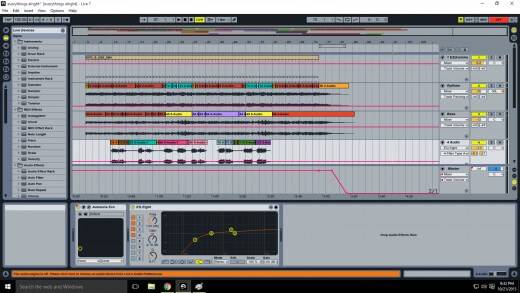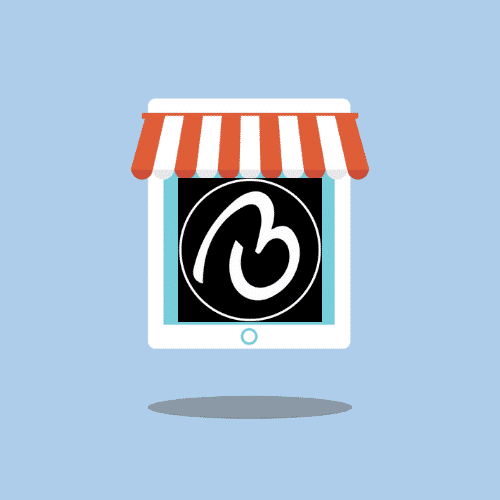Suppose you love your Katana amp, but also love your Line 6 Helix. What’s the best way to use them together? That’s exactly the question that has popped up on forums and social media groups for a few years now.
What you’ll need:
• Line 6 Helix (floor, LT, or Stomp.)
• Boss Katana Head (This can also work with other Katana amps.)
• A powered speaker cabinet (Powercab, Headrush, etc.)
Line 6 unleashed the first Helix in 2016. Eleven years later, we’re now presented with an entire family of Helix products; and each one is incredible!
Boss has been making effects pedals since the 1970s. Their famed arsenal of pedals covers every category from overdrive and boost pedals to mod and delay pedals. I’m a big fan of their auto-wah filter.
Following the popularity of Line 6 (and the technological age) many companies have released all-in-one digital amplifiers with onboard effects. Line 6 has a large selection of amps just the same, but none are as powerful as the Helix floor. Boss released the Katana in 2016, the same time as Helix. There was no comparison, of course. Helix is a floor unit that, today, can do almost anything you can imagine. The Katana is an amplifier, not a floor processor. The amp is loaded with a wide range of Boss pedals built right into the amp. Dial-in your sound and jam. Having no LCD leaves the user at the mercy of the software to tweak tone – but the result is killer! The Boss Katana sounds fantastic. Fat clean tones, clear overdriven tones.
So suppose you love your Katana amp, but also love your Line 6 Helix. What’s the best way to use them together? That’s exactly the question that has popped up on forums and social media groups for a few years now. With the introduction of the Katana Artist and Mkii models, the amps are as popular as ever.
One thing that limits the Katana is the foot controller. If you buy the designated controller (sold separately) you have control over toggling channels on/off. However, that’s all you can do. The controller isn’t nearly as programmable as the Line 6 Helix. For this reason, people love the control of Helix.
While most folks, including myself, love the sound of the Helix, there’s a population of Helix fans who still say that something is missing from the basic amp tones. It’s true, to some extent. My old Marshall amplifier still sounds a bit better (to my ears) than the Marshall models in the Helix. The few clean amps in the Helix always feel a bit thinner than the clean tones on my Marshall, Peavey, or even Katana amps.
Why is this?
I think the main reason is that a basic clean/dirty sound is exactly what an amp is built to do. This full-time job is what the amps specialize in. The Helix isn’t specializing in one thing. The whole unit and its wide library of tones powered by its duel processing are all bound together to make the best sound possible with what’s under the hood. This goes the same for pedals. I have a Rat Pro Co pedal that I’ve always loved. Not once have I felt that any “Rat” style pedal simulation in any effects processor on the market has come close to feeling like and sounding like the original pedal. Again, this is because the pedal is designed to do just that one task. Its entire circuit is built to make the very best out of that tone. One goal. Full execution. Effects processors aren’t like that.
Sounds like chorus, flange, delay, reverb, etc. are quite simple in design. They don’t destroy tone so they execute great on many devices. Your base tone is run through these effects. Hence, the quality of your base tone is what determines how well any other effects will sound onward. For this reason, many people employ the 4 (or more) cable method to utilize Helix’s effects with their original amp’s tone. You simply run through the effects loop on any amp and you’re good to go. All of Helix’s effects joined with your one board. If you’re clever enough, you can even split the chains on Helix and wire things up to have some effects pre and some post putting your amp right in the middle.
So what is the BEST way to use Line 6 Helix with Boss Katana?
First and foremost, I think it’s important to keep the following two things in mind:
• You want full control of both the Helix and the Katana.
• You want to have all doors open. Pre effects. Post effects. Control over all of your effects.
The Katana foot controller is great if you’re only using the Katana amp alone. Joining Katana and Helix together, this little controller is just excessive and it will take up precious real estate on stage. Omit.
Let’s get wired up first.
Instead of running the Helix through Katana’s effects loop, we’re going to simplify. This is still much like the 4-cable method, but we’re working in reverse. Do the following:
• Plug your guitar into the guitar input on the Helix as you normally would.
• For output, plug either quarter-inch/XLR from your Helix outputs to your powered speakers. I like to run XLR in stereo to my Powercab 212.
• Connect a line from the effects loop 1 (send) on the Helix to the input on the Katana.
• Connect a line from the line out on the back of the Katana to the effects loop 1 (return) on the Helix.
So what have we done?
We’ve wired up the guitar input and output on the Helix just like we normally would. We’ve sent a signal from the Helix to the Katana via the guitar input on the Katana. We’ve returned the output signal from the Katana back to the Helix. In short, we’re using the Katana amp as if it’s an external pedal. Typically, an effects loop is used with an external pedal or similar device. You can use an effects loop to run anything into the Helix, however.
With this setup, we are ready to set up an effects chain in the Helix. This is the EASY part.
Go through the Helix block library and select the effects loop 1 block. You’ll see a long list – send 1-4, return 1-4, loop 1-4. Since we wired up through the first effects loop on the Helix, you want to select effects loop 1.
This block now represents the Katana in your effects chain!
From here, you can place ANY effects that are built into Helix before or after your amp by simply dropped those blocks before and after the “Katana block” (effects loop block.)
That’s it. You’re set to use your Katana amp’s natural clean/dirty amp tones with any of the Helix effects.
ADVANCED LEVEL: Can you control the Katana channels and effects from Helix? YES.
Helix’s powerful command center allows for complete control of the Katana via MIDI. You’ll want to run a MIDI cable from the output of Helix to the MIDI input of Katana.
Setting up the MIDI to control the channels on the Katana is fairly simple. Setting up control over the effects is a little more complicated. Tune in to my YouTube channel for upcoming video tutorials on how to set up MIDI between Katana and Helix.
As always, Helix is proving to be a remarkable product. Setting it up with one of my favorite amps, the Boss Katana means Helix doesn’t have to replace anything – it’s perfect alongside anything. You just have to know how to use it to make the best of your setup. What an outstanding unit! Once again, kudos to Line 6!!
Do you use Boss Katana and Helix together? Have you run Katana with another effects unit like AX8, Headrush, Boss GT-1000, etc.? Let us know! I’d love to hear how you’ve set things up.
Cheers. Thanks for reading.
Niko Lalangas
Featured by Line 6!




Thank you so much! I’ve been struggling with figuring out the best way to hook up my helix into my katana!
I was just running
helix send 1 – to katana fx loop return
Helix return 1 – katana fx send
And then I would just set my patches output to fx send 1.
It works pretty well,, but I didn’t have volume control with my helix.
No problem. Thanks for stopping by and welcome to my blog.